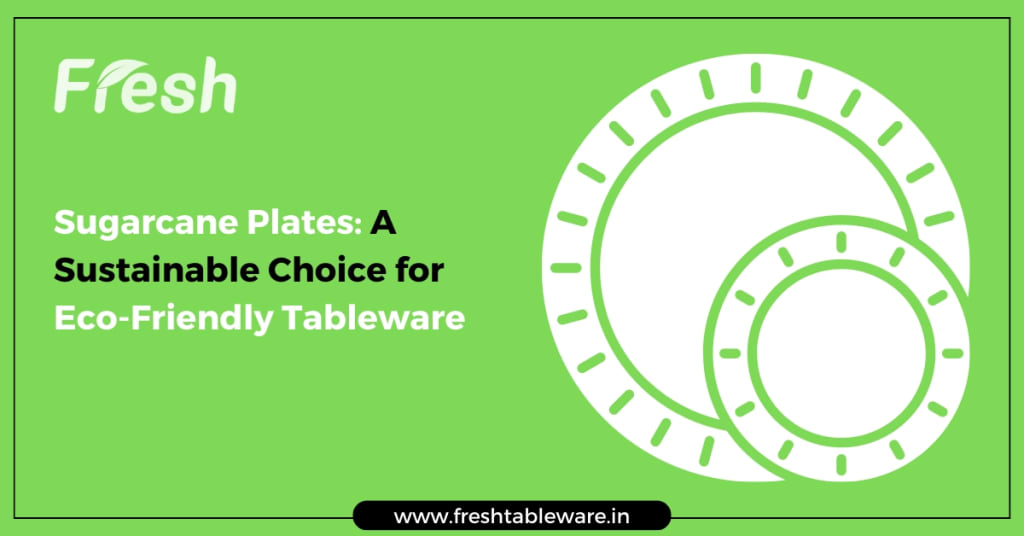Sugarcane Plates: A Sustainable Choice for Eco-Friendly Tableware
Eco-Friendly Sugarcane Plates: Sustainable and Stylish Dinnerware Choice

In the quest for environmentally responsible alternatives to traditional disposable plates, sugarcane plates have emerged as a popular and sustainable choice. Made from the fibrous residue of sugarcane after the juice extraction process, these plates offer a range of benefits that align with the growing demand for eco-friendly dining solutions. Let's delve into how sugarcane plates are made and why they have gained traction as an excellent option for sustainable tableware.
The Creation Process: From Sugarcane Fiber to Tableware
Harvesting Sugarcane: The journey of a sugarcane plate begins with the cultivation and harvesting of sugarcane plants. Sugarcane is a rapidly renewable crop that thrives in tropical and subtropical regions, making it a sustainable agricultural resource.
Juice Extraction: Once harvested, sugarcane goes through a process to extract its juice, which is used to produce sugar and various sugarcane-based products. The extraction process leaves behind a fibrous residue known as bagasse.
Bagasse Collection and Cleaning: The collected bagasse is cleaned and sanitized to remove impurities and any remaining sugar content. This step ensures that the resulting tableware is hygienic and safe for food use.
Pulping and Pulp Preparation: The cleaned bagasse is then converted into pulp through a mechanical pulping process. This involves breaking down the fibers to create a versatile material that can be molded into various shapes.
Molding and Shaping: The bagasse pulp is formed into desired shapes using molds and specialized equipment. This step allows for the creation of different types of tableware, including plates, bowls, trays, and more.
Pressing and Drying: The molded pulp is pressed to remove excess moisture and then dried to achieve the desired level of stability and durability. Drying may involve a combination of heat and air drying methods.
Trimming and Finishing: Once dried, the formed products undergo trimming to achieve smooth edges and consistent shapes. Additional finishing processes, such as polishing or surface treatments, may be applied to enhance the final appearance and functionality of the tableware.
Packaging and Distribution: The finished sugarcane plates are packaged and prepared for distribution. They are shipped to various markets, where they serve as a sustainable alternative to traditional disposable tableware.
Advantages of Sugarcane Plates:
Eco-Friendly: Sugarcane plates are made from a byproduct of the sugarcane industry, utilizing material that would otherwise be discarded or burned. This reduces waste and promotes resource optimization.
Biodegradable and Compostable: Sugarcane plates are biodegradable and compostable, meaning they break down naturally without leaving behind harmful pollutants. They can be returned to the earth as nutrient-rich compost.
Renewable Resource: Sugarcane is a rapidly renewable crop that requires minimal land and water resources to grow. Using bagasse for tableware helps reduce the demand for virgin materials.
Sturdy and Heat-Resistant: Sugarcane plates are known for their sturdiness and heat resistance, making them suitable for a wide range of culinary applications, including hot and oily foods.
Water-Resistant: The natural properties of sugarcane fibers make these plates resistant to moisture, ensuring that they hold up well even when used for wet or saucy dishes.
Customizable and Versatile: Sugarcane pulp can be easily molded into various shapes and sizes, allowing for the creation of a diverse range of tableware items to meet different needs.
Conclusion: Embracing Sustainability, One Plate at a Time Sugarcane plates exemplify the possibilities of turning agricultural byproducts into functional and sustainable solutions. By choosing these plates, individuals and businesses contribute to reduced waste, lowered carbon footprints, and the conservation of natural resources. As the world embraces more eco-conscious practices, sugarcane plates stand as a testament to innovation, sustainability, and a commitment to creating a greener future, one plate at a time.
About the Creator
Raj Kapoor
CEO at Fresh Tableware. We provide eco-friendly Biodegradable Tableware Products In India. Our products are made from biodegradable & compostable materials.






Comments (1)
Sugarcane plates is a great innovative product, especially for Southeast Asia, where sugarcane is ever-present. You may also enjoy the following: https://vocal.media/feast/unleash-your-inner-chef-au1mh0bir Thanks for sharing.